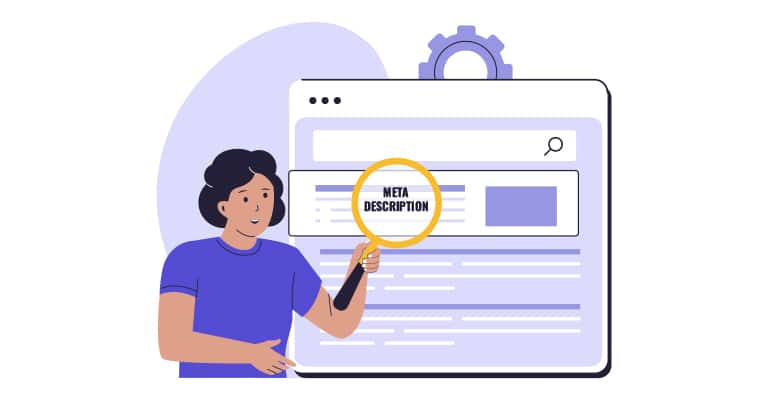If SEO were a magical realm, internal links would be the secret tunnels that connect the various parts of your website kingdom. They might not have the same glamorous reputation as external backlinks, but these little hyperlinks can wield some serious SEO power!
So, what exactly are internal links? Picture them as the friendly neighborhood guides on your website, leading users from one page to another. They’re the helpful signposts that say, “Hey, if you liked this, you might love that!” And the best part? Google loves them just as much as your visitors do.
In this blog post, we’ll explore why internal linking is your website’s best friend, how it can improve your SEO ranking, and how you can start weaving these magical links into your site. So, grab a cup of coffee, settle in, and embark on this linking adventure together!
Why Internal Linking is Essential

You might be wondering, “Why should I care about internal links? Aren’t external backlinks the real MVPs of SEO?” Well, my friend, while backlinks play a crucial role, internal links are the unsung heroes that can make or break your site’s performance. Let’s dive into the reasons why they’re so important.
First, internal links boost your site’s user experience. Imagine walking into a library with no signs or directions—chaos, right? Internal links are like helpful signs that guide your visitors seamlessly through your content. They help users find related information, encourage them to stay longer, and ultimately increase your chances of converting them into loyal customers.
Second, internal links help search engines understand your site structure. They act like a roadmap for search engine crawlers, showing them which pages are most important and how they’re related. The better the crawlers understand your site, the more likely they will rank your content higher in search results. It’s like giving Google a guided tour of your website!
Lastly, internal linking spreads link equity across your site. When you link from a high-authority page to another page on your site, you’re passing on some of that page’s SEO juice. Think of it as sharing the love, and who doesn’t love a little extra SEO love?
The Basics of Internal Linking
Before we dive into the nitty-gritty of building internal links, let’s cover some basics. After all, you can’t build a house without a solid foundation, right?
First things first, what makes a good internal link? The key is relevance. You want to link related content that provides value to your users. If you’re writing a blog post about “The Benefits of Green Tea,” it makes sense to link to another post on “How to Brew the Perfect Cup of Green Tea.” See the connection there?
Next, consider the anchor text. This is the clickable text that links to another page. A well-crafted anchor text is descriptive and gives users (and search engines) a hint about what they’ll find on the linked page. Avoid generic phrases like “click here” and opt for something more specific, like “discover green tea recipes.”
Finally, monitor the number of internal links. While it’s tempting to link to every other word, moderation is key. Too many links can overwhelm users and dilute the value of each link. Aim for a balance that enhances user experience without turning your content into a link jungle.
Creating a Logical Site Structure

Now that we’ve covered the basics, let’s talk about creating a logical site structure. Imagine your website as a tree, with the homepage as the trunk and the various pages branching out from it. A well-structured site makes it easier for users and search engines to navigate, and internal links play a crucial role in this structure.
Start by organizing your content into categories or themes. For example, if you run a travel blog, you might have categories like “Destinations,” “Travel Tips,” and “Food & Culture.” Each category acts as a branch, with individual blog posts as the leaves. This hierarchical structure makes it easy to link related content within the same category.
Once you’ve established your categories, use internal links to connect related pages. For instance, if you’re writing a post about “Top 10 Things to Do in Paris,” you might include links to posts on “Best Cafés in Paris” or “A Guide to Parisian Street Markets.” This not only enhances the user experience but also helps search engines understand the relationship between your content.
Finally, consider using breadcrumb navigation. Breadcrumbs are a type of internal link that shows users the path they’ve taken to reach a particular page. They’re like the little crumbs that Hansel and Gretel left behind in the forest, guiding users back to the main categories. Breadcrumbs improve usability and can give your SEO a nice boost too!
Leveraging Anchor Text for SEO
Ah, anchor text—the unsung hero of internal linking! Choosing the right anchor text can make a world of difference in your SEO efforts. Let’s dive into the art of crafting anchor text that delights both users and search engines.
First, keep it relevant. The anchor text should accurately describe the content of the linked page. If you’re linking to a post about “Best Yoga Poses for Beginners,” the anchor text could be something like “beginner yoga poses” or “yoga tips for newbies.” This gives users a clear idea of what to expect when they click the link.
Second, be descriptive but concise. You want your anchor text to provide enough context without turning it into a novel. Aim for a balance between specificity and brevity. Remember, less is more, but not too little that it leaves users guessing.
Lastly, mix it up! Don’t use the same anchor text for every link. Variety is the spice of life—and SEO. By using a mix of keywords, phrases, and even branded terms, you create a more natural linking profile that’s less likely to be flagged by search engines.
Avoiding Common Internal Linking Mistakes

As with any SEO strategy, there are pitfalls to avoid when it comes to internal linking. Let’s explore some common mistakes and how you can steer clear of them.
First up, don’t overdo it. While internal links are great, too many can be overwhelming. Imagine a page with more links than a chainmail suit—yikes! Aim for a natural flow that enhances the user experience rather than distracting from the content.
Next, avoid linking every page to your homepage. Yes, your homepage is important, but overloading it with links won’t do you any favors. Instead, focus on distributing link equity across your site by linking to other valuable pages.
Lastly, don’t forget to update your links. As your site grows and evolves, some links may become outdated or broken. Regularly audit your internal links to ensure they still point to relevant and active pages. A broken link is like a dead-end street, and nobody likes those!
Using Internal Links to Boost Page Authority
Did you know that internal links can help boost the authority of individual pages on your site? It’s true! By strategically linking from high-authority pages to other pages, you can pass on some of that SEO juice and improve their ranking potential.
Start by identifying your high-performing pages. These are the pages that already have a good amount of traffic and backlinks. Use tools like Google Analytics to pinpoint these gems and leverage them to boost other pages.
Once you’ve identified your top pages, look for opportunities to link to other relevant content. For example, if you have a popular blog post on “Healthy Eating Tips,” you might link to a lesser-known post on “Meal Prep Ideas for Busy Professionals.” This can help drive traffic and authority to the linked page, improving its chances of ranking higher in search results.
Finally, consider using a “hub and spoke” model. This involves creating a central hub page that links to various related subpages. The hub page acts as the main authority, while the subpages benefit from the internal links. It’s a win-win for your site’s SEO!
Enhancing User Experience with Internal Links

At the heart of any successful SEO strategy is the user experience. Internal links play a pivotal role in enhancing how users interact with your site. Let’s explore how you can use them to create a seamless and enjoyable browsing experience.
First, think about the user’s journey. As they navigate your site, internal links can act as gentle nudges, guiding them to related content that might interest them. For example, if someone’s reading a post about “Traveling on a Budget,” you might link to other posts like “Affordable Destinations” or “Money-Saving Travel Tips.”
Next, consider the placement of your internal links. They should be integrated naturally within your content, not shoved into the corner like an afterthought. Think of them as part of the narrative, enhancing the story you’re telling and encouraging users to explore further.
Finally, use internal links to break down silos. It’s easy for content to become isolated, especially on larger sites. By linking related pages, you create a web of interconnected information that improves navigation and encourages users to dive deeper into your site.
Analyzing the Impact of Internal Links
You’ve built your internal links, and now it’s time to see the magic in action! Analyzing the impact of your internal linking strategy is crucial for fine-tuning and maximizing its effectiveness. Let’s explore some key metrics to keep an eye on.
First, track user behavior with tools like Google Analytics. Look at metrics like page views, bounce rate, and average session duration to see how users are interacting with your linked pages. If you notice a high bounce rate on a linked page, it might be time to reassess the relevance or placement of the link.
Next, monitor your site’s crawlability. Use tools like Google Search Console to ensure that search engine crawlers can easily navigate your internal links. If there are any crawl errors, address them promptly to maintain a healthy site structure.
Finally, evaluate the impact on your SEO rankings. Keep an eye on the performance of the pages you’re linking to. If you notice an improvement in their rankings, congratulations! Your internal linking strategy is working its magic.
The Future of Internal Linking
As with all things SEO, internal linking is constantly evolving. Staying ahead of the curve is key to maintaining a competitive edge. Let’s look into the future of internal linking and what trends to watch out for.
First, consider the rise of voice search. As more users turn to voice-activated devices, the way they search and navigate online is changing. This means your internal links need to be even more intuitive and aligned with natural language queries.
Next, think about the growing importance of mobile usability. With mobile traffic on the rise, your internal links should be easily clickable and accessible on smaller screens. Consider using larger fonts and touch-friendly designs to enhance the mobile experience.
Finally, keep an eye on AI and machine learning. Search engines are becoming smarter at understanding context and user intent. This means your internal linking strategy should focus on creating a seamless user journey that aligns with these evolving technologies.
Closing Thoughts: Embrace the Power of Internal Linking
As we wrap up this journey through the world of internal linking, I hope you’re feeling inspired and ready to take your SEO game to the next level. Remember, internal links are more than just hyperlinks—they’re the threads that weave your website into a cohesive and user-friendly experience.
By embracing the power of internal linking, you can enhance your site’s structure, improve user engagement, and boost your search engine rankings. So go ahead, start building those magical links, and watch your website soar to new heights!




